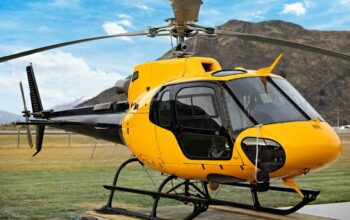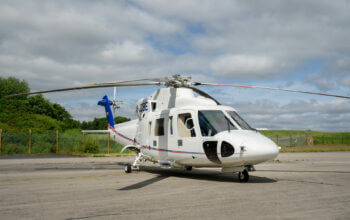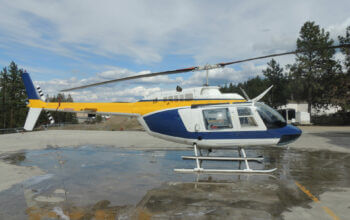The Airbus Helicopters H160 will soon begin its long-awaited “route proving” program with offshore operator PHI, as the new medium type gets set to enter service in North America.
Airbus finally received certification of the type from the Federal Aviation Administration (FAA) in June last year, and this was followed by Transport Canada approval in December.
Speaking to journalists during a pre-Heli-Expo briefing, Gilles Armstrong, head of the H160 program at Airbus Helicopters, said the manufacturer is finalizing validation of the type’s training program by the FAA.
“[This] will allow us then to qualify the PHI pilots and then get started,” he said. “We’re very, very close.”
In terms of any required changes remaining, Armstrong said “a couple of mods” are required, and these are planned to be completed in the “next few weeks.”
“They’re not very intrusive — and we can start some operations without them,” he said.
Four H160s have already been delivered to the U.S. for the route proving program, which will see the aircraft perform offshore operations over the Gulf of Mexico. The aircraft is a 12-seater in oil-and-gas configuration, and will compete against the Leonardo AW139 and Sikorsky S-76 for the role.
“We see the [offshore fleet] replacement market as a very big opportunity for the 160, be it 139s or 76s or others,” said Armstrong. He added that he had seen a very clear acceleration of interest following Sikorsky’s decision to end production of the S-76.
“Some of our first customers are those who really planned ahead for that and thought about it and had a strategy for it,” he said. “But I think a lot of people were surprised at how fast and sudden it was.”
Up to now, the PHI H160s have been supporting the manufacturer’s certification efforts in the U.S., while Airbus has also been working to install the specific configuration required by the operator at the manufacturer’s Grand Prairie, Texas, facility.
“That will remain the case until we start route proving, because we need to still support things like the check rides and things like that to qualify the first pilots,” said Armstrong.
The French Navy has flown 1,000 flight hours with its fleet of six H160s in a largely offshore search-and-rescue role. Armstrong said the lessons learned from this operating experience are being shared among customers.
“We have regular webinars with them, [sharing] all the things that we find, all things that we discover, [and] all the things we’re doing about them,” he said. “And for something like route proving, that’s very valuable — because you get ahead of the problems, you get ahead of the initial niggles of the entry into service.”
The company is building up its H160 training capabilities in North America, and this will include a full flight simulator at its facility in Grand Prairie.
Last year also saw the H160 gain approval from regulators in Mexico, Philippines, and Malaysia, while Indian certification was gained in early 2024. The process to gain certification in China was launched last year.
China will be another major market for the type, with GDAT (a Chinese lessor and operator) placing an order for 50 H160s last year. Most of these will work in the energy sector, but they will also be used for harbor piloting and in an emergency medical services role.









